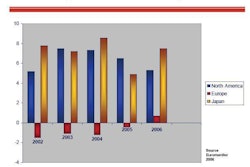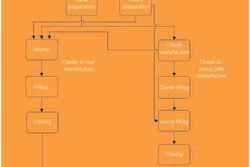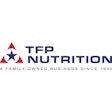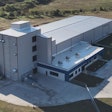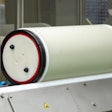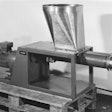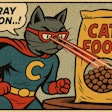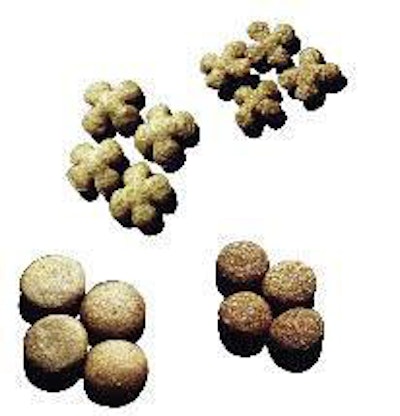
Formulating raw ingredients, selecting process equipment and processing conditions are independent control regions for extrusion cooking of dry petfoods. But these areas are all also interrelated. The choice of ingredients and how those ingredients react to various extrusion processing conditions are key to keeping formulation and operating costs at a minimum while maintaining high quality standards.
Ingredient selection has a tremendous impact on final product texture, uniformity, extrudability, nutritional quality and economic viability. Within certain limits set by a nutritionist, the extrusion cooking process can produce a wide range of products.
Preparing raw materials
The particle size of raw materials will affect the texture and uniformity of the final product. The extrusion cooking process can use a broad spectrum of ingredient particle sizes, but it is best for particles to be uniform in size and density to prevent segregation during mixing and transport prior to extrusion.
Achieving proper particle size results in:
Improved product appearance;
Reduced obstruction of die orifices;
Greater ease of cooking; and
Improved retention of liquid coatings due to a small cell structure.
Many ingredients are available in grit, meal or flour forms that vary in their water absorption rate. The rate of moisture uptake by individual particles is governed by the principle of water diffusivity. Time, temperature of available moisture, individual particle size, pressure of environment, presence of gelatinized starch and hygroscopicity all affect hydration rate.
A uniform particle size of all ingredients ensures adequate hydration and uniform cooking during the extrusion process, thus preventing hard, partially cooked particles in the final product. If the particle size of the raw ingredients is too large, the final product may contain particles of improperly cooked ingredients, which degrade both the product's appearance and palatability. Additionally, if the raw ingredients' particle size is larger than the die orifices, plugging or partial obstruction of the die openings will result in poor product appearance, decreased operating stability and reduced capacity.
Preparing raw materials usually includes grinding prior to extrusion (see Table 1, p. 32). When whole grains are received into the manufacturing facility, they are often pre-ground to pass through an opening of 1,000 µm larger prior to mixing. The final formulation is then passed through a grinding process just prior to extrusion to achieve the desired final particle size.
Particle size is especially critical if the final product is a delicate shape or the die orifices are small. For die orifices less than 3 mm in diameter, the grind should be fine enough to ensure the largest particles are no larger than one-third of the die opening.
How different ingredients react
During extrusion cooking of cereal grain and protein blends, the moistened granular or floury materials are generally converted into dough. The starchy components gelatinize, resulting in a substantial uptake of moisture and an increase in dough viscosity. Some protein constituents may impact elasticity properties characteristic of hydrated and developed glutinous dough. Other materials with low protein solubility, such as meat meal or fish meal, may contribute less to the adhesive and stretchable functional properties.
Starch for energy, expansion
As the primary carbohydrate and an important source of energy in petfoods, starch levels can vary from as little as 5% to as much as 60% of the formulation. Levels of 30% in cat and puppy foods and 40% in dry expanded dog foods are typical.
When gelatinization occurs during extrusion cooking, starch becomes soluble and absorbs large quantities of water. It also contributes to expansion and binding in the final product. The amylose fraction of starch has greater binding properties than the amylopectin fraction. Tuber starches such as potato and tapioca, which are high in amylase, are the best choices for binders to improve cohesion of the final product. Pre-cooked starches are sometimes used in formulations, though they cost more.
Starch levels in the final product are dictated by nutritional requirements and the desired bulk density. Increasing the starch content can help decrease the bulk density of extruded products.
Protein's functional properties
Because cereal grains alone cannot provide the required amino acid balance, proteinaceous ingredients serve to ensure nutritionally complete petfood diets. These ingredients often comprise 25 to 70% of the formulation.
Plant protein sources include soybean meal, wheat gluten and corn gluten meal. These vegetable proteins contribute greatly to the structural and nutritional aspects of petfoods. Due to their low heat treatment, they have good functional properties and assist with expansion and binding during extrusion. They may be used as a protein source in formulating a feed or processed directly to serve as meat extenders in dry and canned petfoods. Vegetable protein sources can't be used exclusively as they don't provide all essential amino acids.
Animal proteins generally do not contribute structurally to extrusion cooked petfoods. During their preparation, they are often subjected to a high degree of thermal processing, which renders them nonfunctional. The exception are products used in their fresh form or processed in a manner to preserve the protein solubility, such as spray-dried blood meal. The addition of animal protein sources in a formulation allows a complete amino acid profile to be provided for the animal. The most common sources of animal proteins include fresh meat, poultry by-product meal, fish meal, meat and bone meal, blood meal and gelatin.
Many animal proteins and animal by-products are used in their natural, "fresh" state or in a preserved, moist form. Fish solubles, fish wastes and silage are other excellent sources of protein that can be pumped into the extrusion system in a wet form. Levels of 20 to 40% are common, limited by the amount of water and fat they provide.
Fat can affect final product
Fats or lipids are an excellent source of energy in petfoods. Fat levels can exceed 30% but usually comprise less than 20% of the complete recipe. If extrusion is carried out at low moistures (<20%) and high temperatures (>150°C), it is quite likely that lipid/starch and lipid/protein complexes will be formed. Free fatty acids and polar lipids are especially reactive in these situations.
Table 2 gives a general guideline for the effect of fat levels on product quality; not only the level but also the source of fat affects the expansion rate during extrusion. Indigenous fats, which are supplied as a component of a particular ingredient, tend to have less effect on expansion than fats added in their refined form. For example, a 15% fat formula where the fat is supplied through full-fat canola as a component of that formulation has less effect on expansion than pure canola oil added to provide the same final fat level in the product.
Heating fat sources to 40 to 60°C prior to blending with the balance of the formulation will minimize temperature-dependent viscosity changes, assist in the cooking of the total product and reduce the expansion-depressing effect. Fat sources include tallow, poultry fat, vegetable oils, marine oils and various blends from all sources. Selecting hard fats (those with high melting points) may minimize fat migration into retail packaging during storage.
Fiber differences
Reduced-calorie foods for obese or inactive pets are common in the marketplace. These diets contain significant levels of cellulose and hemicellulose. Extrusion conditions are rarely severe enough to affect the apparent digestibility of dietary fiber. However, fibrous ingredients possess bulk densities and hydration properties quite different from traditional ingredients and require different extruder configurations and processing conditions.
High levels of fibrous ingredients tend to disrupt the continuous carbohydrate matrix of the extruded product, resulting in a rough appearance and excessive fines. The starch content of some fibrous ingredients such as wheat midds or rice bran can vary from 16 to 40% depending on the variety, growing conditions and milling properties of the grain. The variable starch levels can dramatically affect the extrusion process.
As more extruded products enter the market, interest is growing in their nutritional value. Although the basic effects of the more traditional thermal processing methods on nutritional quality are well understood, little is known about the combined effects of short-time, high-temperature extrusion of relatively dry feed materials. Understanding the complex phenomena involved will help optimize nutritional quality of these products.

